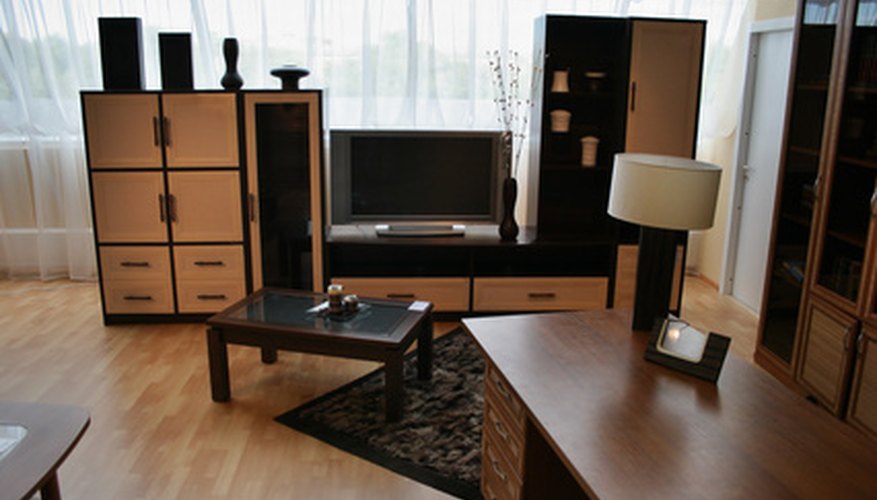Melamine is a heat-resistant substance used in the composition of bathroom and kitchen surfaces. This material is often included in items such as floor tile and Formica counters and cabinets. A melamine surface isn't readily receptive to stains, but patient use of the correct materials will allow a change in colour and texture. Planning is essential for this project, because the surface will need to be left undisturbed for a number of days. This home renovation project can be completed in about a week.
- Melamine is a heat-resistant substance used in the composition of bathroom and kitchen surfaces.
- A melamine surface isn't readily receptive to stains, but patient use of the correct materials will allow a change in colour and texture.
Wipe the melamine surface with Trisodium Phosphate (TSP), using a rag. Rinse well with clear water.
Rough up the surface with a hand-held sander, using 150-grit sandpaper. This will allow the primer paint a proper surface to adhere to. Run the sander evenly along the entire area to be stained. Wipe away the dust using a tack cloth.
Use a paint sprayer or small paintbrush to apply a stainable latex primer coat, available at most home improvement centres. Let the primer dry for two hours.
Use a natural-bristle brush to spread on a gel stain in your choice of colour. Strie, or drag, a wood-graining tool along the length of the surface. Move it slowly enough to produce a relatively straight line. This will create a natural wood grain effect.
- Rough up the surface with a hand-held sander, using 150-grit sandpaper.
- Use a natural-bristle brush to spread on a gel stain in your choice of colour.
Allow the solvent in the stain four or five days to dry before applying the topcoat. Keep all items away from the melamine surface as it dries.
Spray three coats of polyurethane topcoat. Each layer needs to dry for two or three hours before the next application. Check that the surface is completely dry before using it.
TIP
Keep the area clear of dirt and loose items and allow the solvent adequate drying time. Use a small practice board to get the hang of using the wood-graining tool. Use a water-based polyurethane topcoat for light coloured stains and an oil-based topcoat for darker colours.
WARNING
Wear a ventilator mask, safety glasses and gloves when working with solvents. Immediately clean up any spills while they are wet. Dry spills are difficult to remove and will lead to permanent staining. Keep the area well ventilated as the fumes are very strong.
